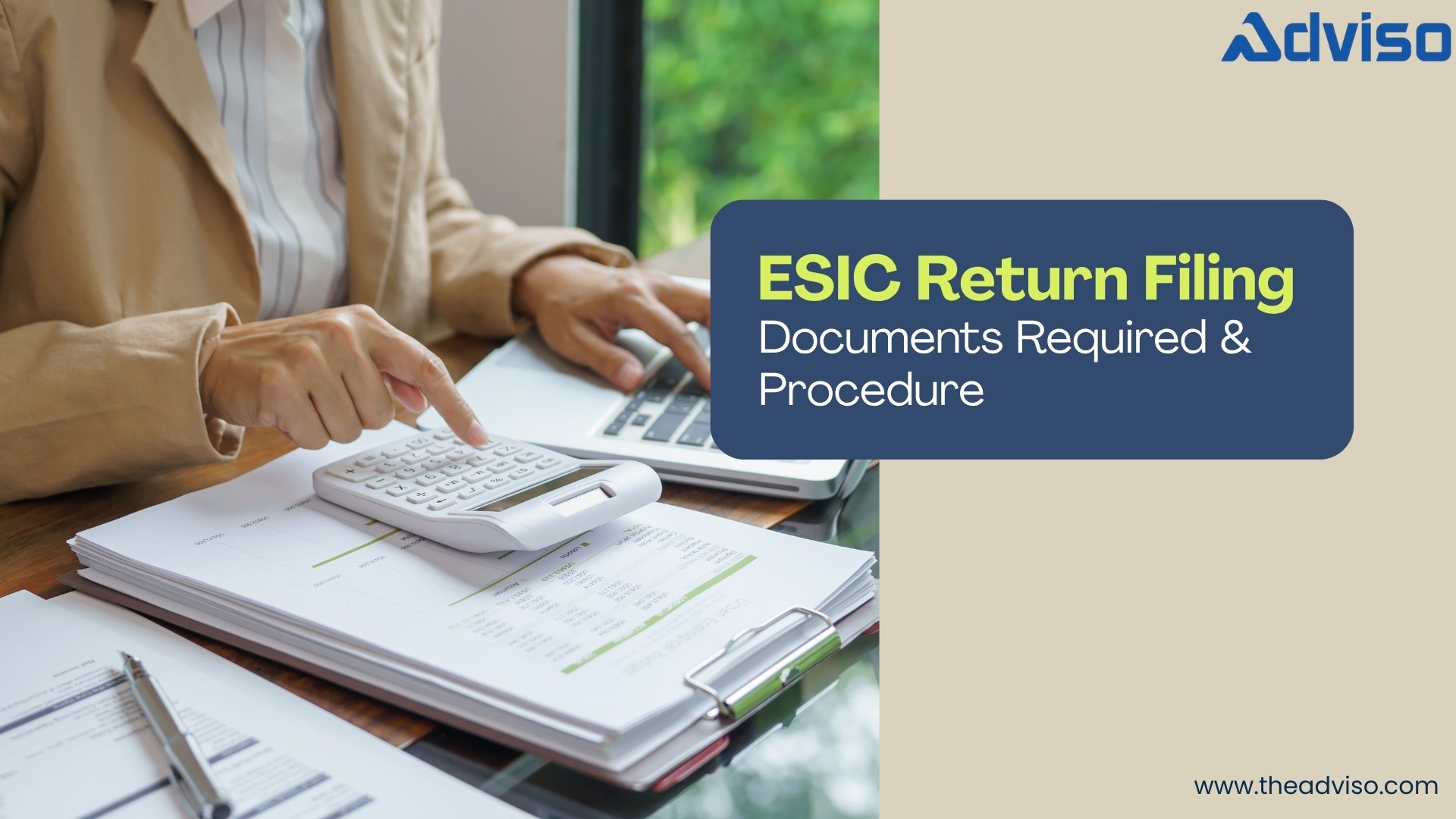Does your company fall under the ESIC norms? If so, you must be wondering how to file the ESIC return. For those new to this, it is vital to note that the ESIC filing is mandatory, provided they fall under the ambit of ESIC’s guidelines. The timely filing ensures that you care about keeping your employees’ benefits intact, spanning from medical benefits to maternity incentives. Let’s learn everything about the ESIC return filing, including what it is, the benefits it offers, due dates, and penalties for non-compliance.
What is an ESIC?
ESIC stands for Employees’ State Insurance Corporation- it is a government authority that mandates contribution payment from both employers and employees. This accumulated amount provides financial assistance during medical emergencies, maternity, and other similar needs.
ESIC is committed to supporting the working class in India with a range of benefits that enhance their livelihood and incentivize their contributions. Think of it as of reliable ally that helps employees overcome unprecedented situations, including injuries at the workplace.
Legally, every qualified employer in India must follow ESIC norms and file a timely return. Speaking of ESIC return filing, this article spans everything critical around this subject matter, equipping you with information for seamless compliance adherence. So, let’s begin.
What is ESIC Return Filing?
By catering to ESIC return filing, the employer shares critical information with the Employees’ State Insurance Corporation (ESIC) on a monthly basis. These include:
- Total number of employees covered
- Employee wages
- Employer and employee contributions
- Any additions or deletions of employees
- Changes in the salary structure that affect the contribution
This filing not only enhances the employer’s credibility but also keeps employees’ benefits intact, ensuring they get compensated aptly as and when required.
Who Must File ESIC Returns?
Ensure ESIC return filing if you have:
- A non-seasonal factory or production facility with a workforce comprising 10 or more employees
- A shop, a commercial outlet, a medical store, an eating house, a transport agency, or a theater, boasting a manpower comprising 10 or more employees
- A workforce comprising employees earning a monthly salary of up to Rs 21,000 and Rs 25,000 for a physically challenged person
It is noteworthy that an ESIC return filing is also mandatory for employers who have a workforce that exceeds the contribution wage limit in a particular month.
Documents Required for ESIC Return Filing
Here are some mandatory paperwork requirements for the ESIC return filing:
- ESIC registration certificate issued at the time of registration
- Employee attendance register, demonstrating monthly attendance
- Wage register showcasing employees’ wages, salary slips, and allowances
- Employee details, such as name, Aadhaar number, Insurance Person number, date of hiring, and wage details
- Register of ESIC contributions
- Bank statements reflecting wage payments
- Challan of ESIC contributions paid
How to Address ESIC Return Filing?
The ESIC return filing requires following the given steps:
Step 1: Visit the ESIC Portal
Head to the ESIC official portal and log in via your Employer Login credentials.
Step 2: Add or Update Employee Details
Before starting with filing, enter the employee’s details to estimate the contribution accurately.
- Add new employees
- Remove employees who have exited
- Update wages if the salary has changed
Step 3: Calculate Monthly Contributions
Make sure you are paying the correct ESIC contribution. Refer to the given rates for accurate estimation:
- Employee contribution: 0.75% of wages
- Employer contribution: 3.25% of wages
Contributions will be paid based on the total monthly wages, including DA, HRA (where applicable), overtime, and other allowances.
Step 4: Generate the Contribution File
Once you have verified wage details, it is time to generate the monthly contribution file from the employer dashboard. Double-check every entry to avoid any miscalculation, which can lead to errors.
Step 5: Make ESIC Contribution Payment
It is time to make a contribution payment. You can use one of the following payment methods:
- Net banking
- Debit card
- NEFT
Upon successful payment, the ESIC portal will generate the e-challan/acknowledgment slip, which serves as tangible proof for record-keeping purposes.
Step 6: File ESIC Monthly Return
After payment, head over to the section, viz. “Monthly Contribution”. Explore this section to file a return by uploading the required details.
Please note that you must file the ESIC return on or before the 15th of every following month to avoid penalties..
Penalties for Late ESIC Return Filing
Delays or non-compliance can lead to serious financial consequences:
- Interest: 12% per annum for late payments
- Penalties: Can range from Rs 5 to Rs 100 per day, depending on the violation
- Prosecution: In severe cases, employers may face legal action
Tips for Avoiding Penalties For ESIC Return Filing
Here are some actionable recommendations for a seamless ESIC return filing:
- Make sure all wage-related records are up to date.
- If possible, maintain a real-time database of employees
- Double-check the contribution figure to avoid clerical mistakes
- Keep challans and return copies intact for record-keeping purposes. The ESIC may inspect them to verify compliance.
- Conduct regular audits to ensure compliance with ESIC guidelines.
Ensuring timely ESIC return filing is essential to ensure compliance with the authority’s guidelines and avoid penalties. Every employer covered under the ESIC rules must fulfill the return requirements to ensure their workforce avail of the benefits they are entitled to. Any negligence in regards to filing or record-keeping can wreak havoc on the employer’s credibility, hindering their ability to unlock government incentives and tax benefits. If staying compliant with ESIC rules is something you find overwhelming, Adviso’s experts take care of what’s mandatory.
Today, Adviso ranks among the top-rated service providers in India, specializing in global incorporation, local compliance, and industry-specific licensing. Whether you want to expand seamlessly or meet local laws to stay penalty-free, Adviso ensures your business journey remains smooth and free of legal clutter. Contact us now to transform how you handle compliance.
Also Read: How to File a PF Return Online in India
FAQs
1. What is ESIC return filing?
ESIC return filing is the monthly online submission of employer and employee contributions to the ESIC portal. Every ESIC-registered establishment must file returns to stay compliant.
2. What documents are required for ESIC return filing?
Key documents include ESIC registration certificate, attendance register, wage register, employee details, contribution records, bank statements, and paid challans.
3. What is the due date for ESIC return filing?
Employers must file monthly ESIC contributions and returns on or before the 15th of the following month.
4. How do I file ESIC returns online?
Log into the ESIC portal, update employee details, calculate contributions, make the payment, and file the return online using the employer dashboard.
5. What happens if ESIC returns are not filed on time?
Late filing attracts interest, daily penalties, and possible prosecution. Timely filing helps avoid compliance risks.




